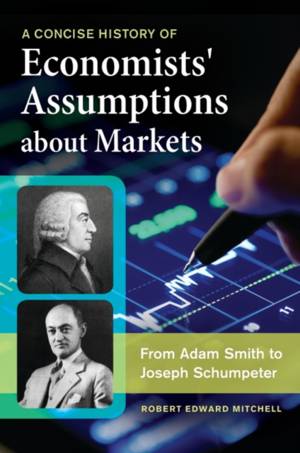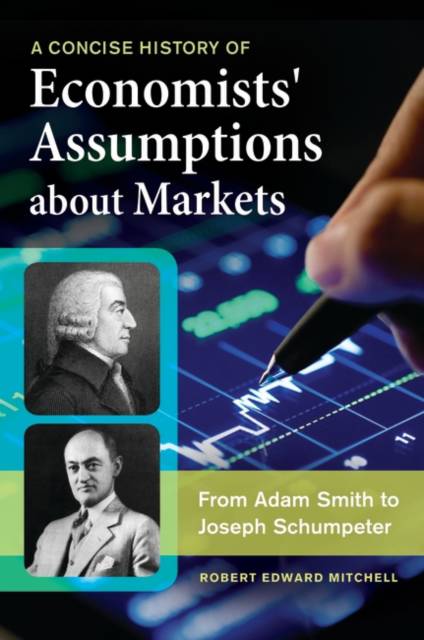
- Retrait gratuit dans votre magasin Club
- 7.000.000 titres dans notre catalogue
- Payer en toute sécurité
- Toujours un magasin près de chez vous
- Retrait gratuit dans votre magasin Club
- 7.000.0000 titres dans notre catalogue
- Payer en toute sécurité
- Toujours un magasin près de chez vous
A Concise History of Economists' Assumptions about Markets
From Adam Smith to Joseph Schumpeter
Robert Mitchell
Livre relié | Anglais
93,45 €
+ 186 points
Description
This open-minded, multidisciplinary approach challenges existing world views on the endogenous and exogenous forces that drive markets and economies.
Nine narrative chapters and a conclusion provide an accessible history of key premises and assumptions in the mental models proposed by several major economists since the 1776 publication of Adam Smith's The Wealth of Nations and show how--and why--those models and their underlying assumptions have changed over time. The book addresses the legacies of major economists, describes their historical and analytical influence, documents the interaction among various schools of thought as well as how they differ, and the implications that this history has for economics and the policy sciences in the decades ahead. The author focuses on the mental maps economists have created in an attempt to understand the forces that destroyed "order," explaining how these maps incorporate a non-mathematical presentation of evolving dictionaries, novel analytical perspectives, new evidence, and a reliance on value assumptions. He traces the underlying assumptions, continuities, and differences among major economists including Adam Smith, Thomas Malthus, David Ricardo, Alfred Marshall, John Maynard Keynes, Karl Marx, Thorstein Veblen, and Joseph Schumpeter. Readers will grasp how the classic theories still influence economists' mental models today and come away with a basic economic literacy that puts this important social science in historical context. This is essential reading for all the social and policy sciences.Spécifications
Parties prenantes
- Auteur(s) :
- Editeur:
Contenu
- Nombre de pages :
- 192
- Langue:
- Anglais
Caractéristiques
- EAN:
- 9781440833090
- Date de parution :
- 28-08-14
- Format:
- Livre relié
- Format numérique:
- Ongenaaid / garenloos gebonden
- Dimensions :
- 155 mm x 236 mm
- Poids :
- 453 g

Les avis
Nous publions uniquement les avis qui respectent les conditions requises. Consultez nos conditions pour les avis.






